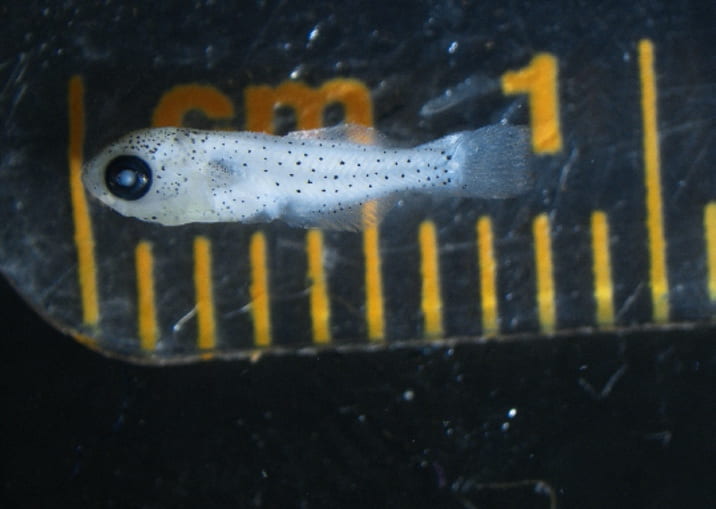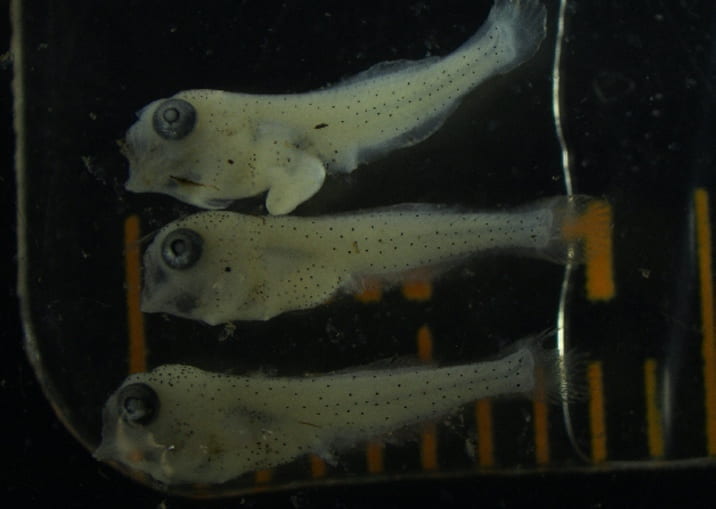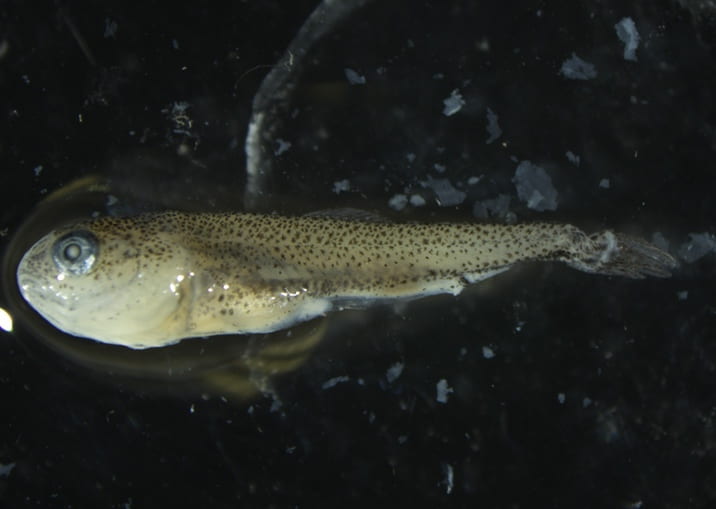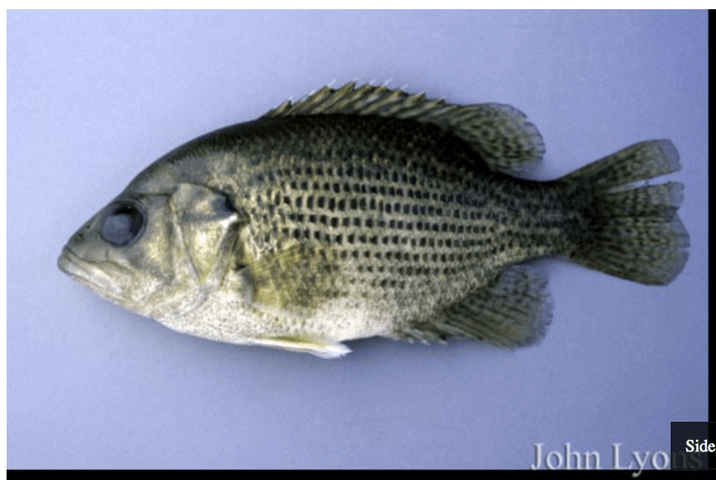Key Characteristics:
- Roughly equal number pre and post-anal myomeres.
- Fewer total myomeres than Percidae (less than 35).
- Double dorsal fin, but this may not be visible until they are older.
- Dorsal and anal fins across from each other.
- Deep-bodied
- Can have many or few melanophores.

Larval Rock Bass. 7 mm. United States Fish Wildlife Service. Milwaukee Harbor, WI. Ashley Smith. 2017.

Multiple Larval Rock Basses. Between 7 mm – 8 mm. Green Bay, WI. Ashley Smith. 2017.

Larval Rock Bass. 12.2 mm. United States Fish Wildlife Service. Green Bay, WI. Marian Shaffer. 2017.

Juvenile Rock Bass. 32.5 mm. United States Fish Wildlife Service. Green Bay, WI. Adam Dziewa. 2018.
- Body not elongated, eel-shaped, round in transverse section, uniformly pigmented (1B)
- Chin barbels absent (3B)
- Snout short, its length usually less than 10% TL; median fins otherwise (5B)
- Median fins or finfolds showing distinct separation (7B)
- No adipose fin, or demarcation of one, in finfold (10B)
- Preanal myomeres greater than or equal to postanal myomeres (14A)
- Preanal myomeres approximately equal to postanal myomeres (difference five myomeres or less) (15A)
- Total myomeres less than 35 (20B)
- Total myomeres between 26 and 34 (21B)
- Adipose fin or its position absent (23B)
- Double Dorsal Fin (24A)
- (Centrarchidae)
Adult History
- Physical Description
- Largemouth extends to the eye, dark gill spot, dark spots on each scale, overall bronze appearance, red eye, dorsal fin has two lobes (first spine: 10-12 spines & second: 10-12 rays), anal fin has 5-7 spines and 9-11 rays, and 39-43 ctenoid lateral scales
- Spawning Habitat
- Shallow water along the shores near aquatic vegetation
- Lakes & streams
- Shallow water along the shores near aquatic vegetation
- Spawning Substrate
- Eggs are deposited over gravel or sand
- Spawning Behavior
- Polygynandry Behavior
- Nesting activity takes place at water temperature of 53 – 61°F
- Males build nests for spawning
- Male circles the nest awaiting the female
- Males guard the nest after their eggs are fertilized
- Females will either go mate again or stays around their original breeding spot
- Time of Year
- May – July in Lake Michigan
- Spawning typically takes place at water temperatures of 60 – 70°F
- Diet
- Piscivore – crayfish, aquatic insects, and small fish

